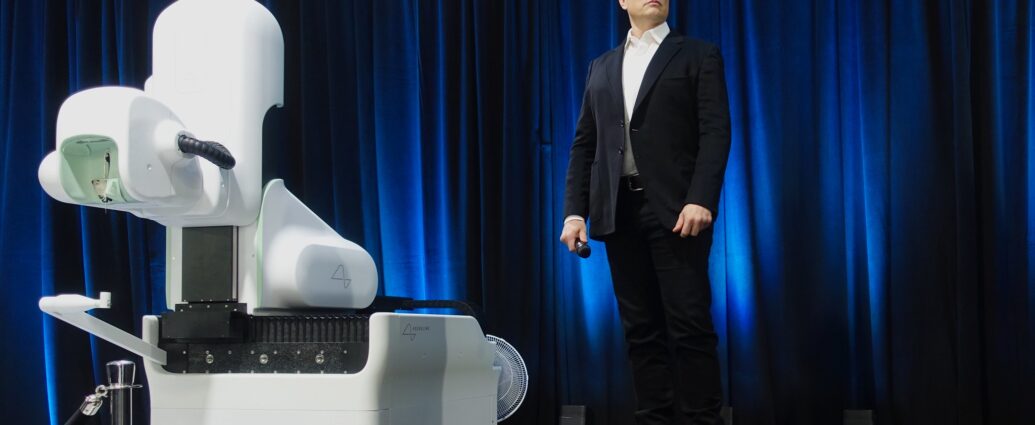Devika Sreejith
Elon Musk’s tech start-up Neuralink has implanted a human patient with a wireless brain chip for the first time.
The billionaire founder of the neurotechnology company posted on X (formerly Twitter) that the first human to receive a Neuralink implant was recovering well, reporting a “promising neuron spike detection.”
The first human received an implant from @Neuralink yesterday and is recovering well.
Initial results show promising neuron spike detection.
— Elon Musk (@elonmusk) January 29, 2024
The news comes months after the company started recruiting humans for clinical tests.
The US Food and Drug Administration (FDA) had given the company clearance to carry out the first trial of its implant on humans in May last year.
Neuralink subsequently called for people over the age of 22 with quadriplegia — a condition where one cannot move all four limbs due to paralysis — due to amyotrophic lateral sclerosis (ALS) or a spinal cord injury.
The clinical trial is called PRIME (Precise Robotically Implanted Brain-Computer Interface) and involves a robot placing the device into the cerebral cortex of the subject.
What Is Neuralink?
Neuralink aims to help with complicated neurological conditions, including paralysis.
The goal is to connect the human brain to computers using technology known as Brain-Computer Interface (BCI), which decodes brain activity.
BCI’s will help people control devices such as computers and wheelchairs using only thought.
Explaining the objective of Neuralink, Musk said, “Imagine if Stephen Hawking could communicate faster than a speed typist or auctioneer. That is the goal.”
Musk also revealed that “The first @Neuralink product is called Telepathy.”
Enables control of your phone or computer, and through them almost any device, just by thinking.
Initial users will be those who have lost the use of their limbs.
Imagine if Stephen Hawking could communicate faster than a speed typist or auctioneer. That is the goal.
— Elon Musk (@elonmusk) January 30, 2024
The device is about the shape of a coin and is inserted in the skull. Each device has a chip that contains 64 flexible polymer threads that are thinner than a human hair. 1024 electrodes are spread across these threads, to help the device record brain activity and “movement intention.”
Reuters alleged in December 2022 that Neuralink had conducted animal testing, resulting in around 1500 deaths.
According to the report, this was due to Elon Musk’s demands to expedite the research process. Four experiments involving 86 pigs and two monkeys were repeated due to human errors, leading to more animal deaths.
While the US Department of Agriculture were unable to find evidence of violence in animal research, law enforcement officials investigating Neuralink highlighted the Department of Agriculture’s oversight of the company’s operations in allowing the death of animals.
Public Reception
This concept of digitising brain function for those with paralysis is not new.
A Dutch man named Gert-Jan Oskam, who was paralysed in 2011 due to a cycling accident, learned to walk again in 2023 with the help of electronic brain implants. The study was conducted by Swiss researchers at Lausanne University.
Additionally, Blackrock Neurotech, a rival of Neuralink, implanted its first BCI in 2004.
Although Neuralink are trying to revolutionise BCIs, potential subjects are sceptical. One reason for this is that Musk has made far-reaching claims in the past, including claims that SpaceX would be able to fly to Mars by 2018.
It is unclear how accessible this device will be. Since every human being and their brain functions are different, one chip cannot suit all, and creating different ones requires extensive research.
The implantation is a “meticulous process” and also requires invasive surgery, which many may not be willing to undergo according to Dr Dean Burnett at Cardiff University.
Neuralink’s promotional video shared the idea of being able to browse the internet and play video games using only your thoughts. Musk also previously said that users may be able to replay memories, though also stated: “this is sounding increasingly like a Black Mirror episode.”
Musk claims that his ultimate goal through Neuralink is to protect humankind from the “existential threat” of artificial intelligence.
He claimed that by combining brain activity and computers, we are less likely to be “left behind.”
The extent of the device’s ability is as yet unknown.
Read Next:
-
Neuralink: Elon Musk’s Most Recent Not-So-Groundbreaking Invention
-
Elon Musk cleared of fraud in trial over ‘Funding secured’ tweets
-
AI in the Newsroom: A Tool for Good or Evil?
Featured image courtesy of Steve Jurvetson via Flickr. No changes were made to this image. Image license found here.

